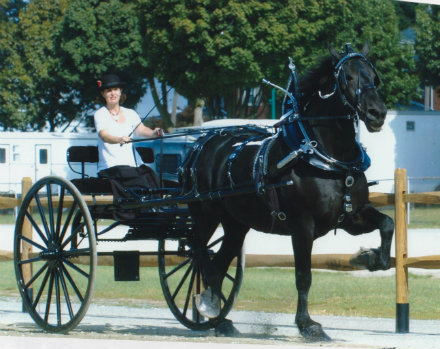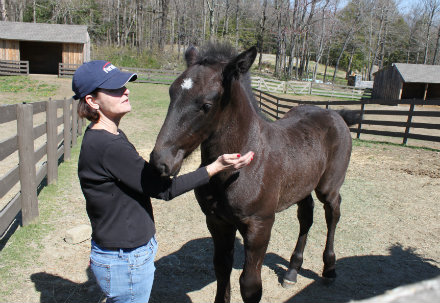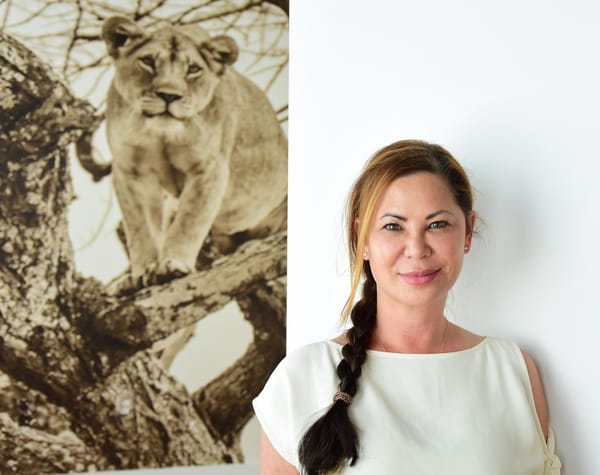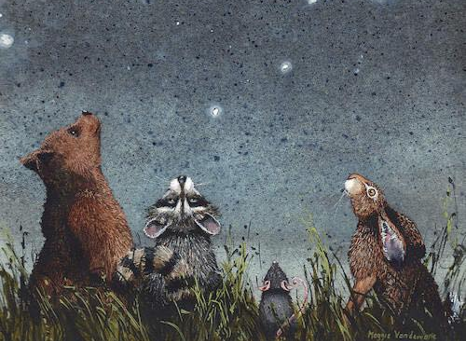
By Nichole Dupont“Never turn your back on a stallion," Ann Egan says as she enters the dusty paddock where her prize stud stands. “A stallion can have an off day, you just never know. I love this big guy, he's my heart horse. But he's still a stallion, nonetheless." It's easy to see where the love comes from. Egan's 13-year-old prize stallion, Wincredible, is a gorgeous sight. At 18 hands high (for those of you non-horse people, a hand equals 4 inches; so this baby is 6 feet high from his feet to his shoulders—that's a big 'un!), this velvety black equine is the paragon of his Percheron breed. Muscled, shiny, and bedecked with a raven mane and solid feet, his features harken back to the days of powerful war horses and a wild Breton landscape. But make no mistake, this stallion's life is a far cry from the mud-tossed working existence of his forebears. Wincredible's value rests literally in his bloodlines. He is the stud, the money maker, for Litchfield's North Point Farm, owned and operated by Tim and Ann Egan, who, despite her obvious ease with the draft giants she raises, says she never had an interest in large breeds.

“The whole draft horse thing was foreign to me," she says. “Tim built this barn and it stood empty for two years. Then, one year, when we went to the Big E [the Eastern States Exposition]—Tim wanted to see the steer showing—he pointed his finger at a Percheron pulling a cart. He wanted to get some for the barn. He liked how they looked." That was five years ago. Now, a few geldings and several mares later, North Point Farm has put itself on the map for producing some of the world's most gallant, champion horses. All with an honest hand, says Ann, whose motto for the farm is “firm and fair." While they do train and sell some of their herd, the bulk of North Point's business is in breeding; both on-site siring (which can take up to 30 days to get a mare pregnant), and the high-tech business of freezing, cooling, and shipping semen to ranches and farms all over the world (the latest shipment, thanks Wincredible, was just sent to Australia) to the mighty tune of $1,800 give or take. And because of their stallion's gorgeous progeny, his standing sheet—consider it a dance card for horses—always fills up. The show season is also kicking into high gear and Ann, who has just come off a year of heavy travel giving workshops at events as far away as Calgary, Canada, is preparing, once again, to leave the farm with a semi that can pull nearly a dozen horses and heavy carriage equipment. If she is daunted, she doesn't show it.

“If I own it, I show it," she says, looking at Sherman, the farm's only barn cat (and a New England champion himself). “I'm a farm wife from Connecticut. And it's usually just the two of us, me and Tim, who keep this place going. I'm eating SpaghettiOs for lunch and my horses have a nutritionist. It's a lot of work. Thankfully, I just so happen to like SpaghettiOs." And horses. Even “moody mares" as she calls them. And, of course, the fast-growing renown that is attaching itself to the North Point name. At her latest workshop, Ann could barely keep from trembling in her paddock boots when she met 85-year-old George Morris, an Olympic medalist and trainer who practically invented hunt seat equitation. “I remember watching George Morris in the Olympics (in Rome), all us horse-crazy girls do," Ann says wistfully. “And there I was talking to him. And three people even asked for my autograph, and I was stunned. I mean, c'mon, I'm a breeder. But people do love to talk about Percherons. That's the thing about these horses, they really will try their best to give you what you want. Every time."

As for Ann, her dream, ironically, is to one day walk into her state-of-the-art barn and see “a barn full of geldings." But that may never happen. Entering the “maternity ward," Ann stops to play with a leggy one-month-old colt (300 lbs. at birth) who has yet to be named, as his mother looks on. The boy is a rare sight at this farm full of feisty females. “We usually sell the colts; our setup was never designed to keep stallions," she says. “We're in the filly business. We sell three or four mares every year. But, god, I love to watch those foals go running across the field when it's time to come in for the night."








